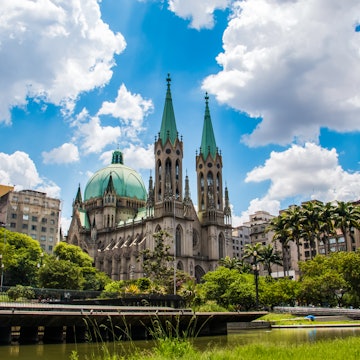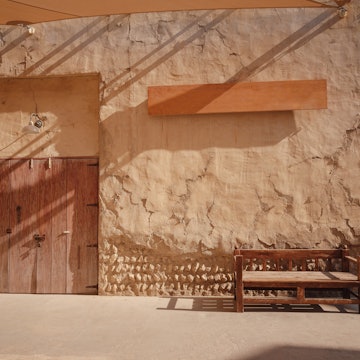
Lonely Plan-it: How to float down the Amazon and enjoy memorable meals around Manaus, Brazil

Oct 3, 2023 • 8 min read

A cruise down the mighty Amazon on the bucket list of most adventurous travelers. Here’s how to plan yours © Ramesh Thadani / Getty Images
It’s almost impossible to understate the allure of the Amazon.
The world’s largest rainforest enjoys myth-like travel status among curiosity seekers and adventurers – despite being one of the muggiest, wettest and notoriously difficult places to navigate on Earth.
The contrasts in modernity, lifestyle, food, nature and personality between the megalopolis of São Paulo, Brazil’s largest city, and Manaus, the Amazon’s largest city – 2691km (1672 miles) between them, as the macaw flies – are startling, especially so for two places within one same (huge) country. You can be certain that the capital of the Brazilian state of Amazonas isn’t going to be anything like your home, either.

And therein lies its appeal.
Sitting at the confluence of the blackwater Rio Negro – the largest left tributary of the Amazon – and the khaki-toned Rio Solimões – the 1609km(1000-mile)-long, 80km(50-mile)-wide upper section of the Amazon – Manaus has defiantly dug in among one of Mother Nature’s most superlative environments, determined to live off a land that, while deeply unforgiving, serves up an exotic cornucopia of nature and nurture to those who respect its wonder.
A visit here is equally extraordinary: unparalleled biodiversity and feats of the natural world await outside a breakneck jungle metropolis, filled with far-flung foods, frenetic markets and river-driven way of life. Besides Belém in the neighboring state of Pará (the Amazon’s other big city of note), Manaus knows no peers. You’re in the thick of it here – and that’s precisely the point.
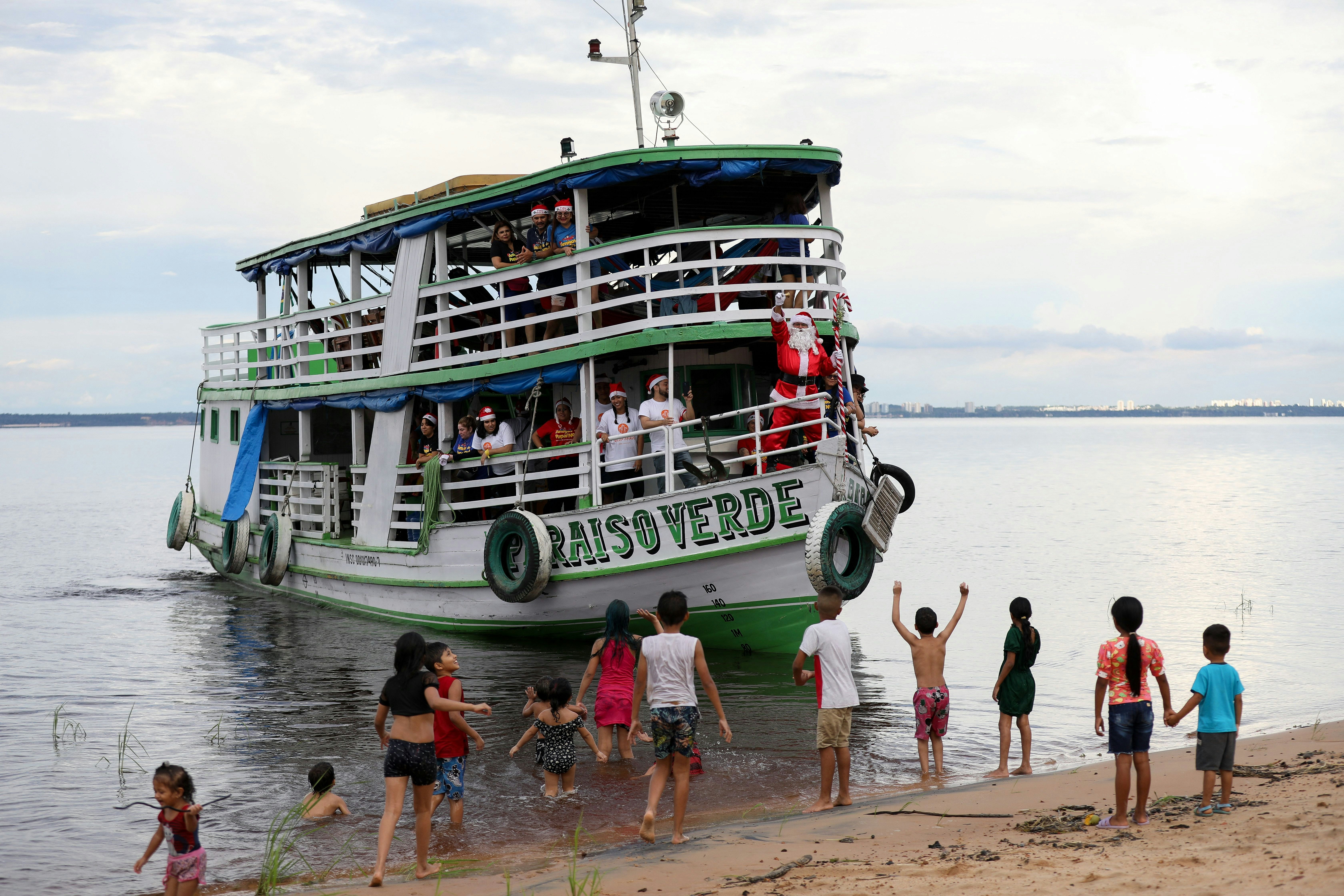
Step 1: Pick a time of year to visit
More wildlife during the dry season, or deeper access during the wet months?
The Amazon’s two distinct seasons – wet (high water) and dry (low water) – offer advantages and disadvantages that anyone visiting the jungle should carefully consider. The July-to-December dry season affords lower river levels and better wildlife-spotting potential from riverboat cruises. The January-to-May wet season is true to its name, bringing on rainier days and higher humidity, along with rising water levels that allow for better tributary access via such alternative transport methods as canoes.
June is the sweet spot: water levels remain high and scenery is at its greenest from the rainy season, but rainfall drops off as the jungle transitions to the drier period. The wet season obviously yields more mosquitos (one of the Amazon’s greatest nuisances), but in reality the difference is negligible – they remain a year-round menace. From a price perspective, costs rise during the Brazilian summer (December to February), so there are deals to be had outside of those months.
Step 2: Sort out your visa situation for Brazil
Check ahead for ever-changing policies.
While citizens from Australia, Canada and the USA have enjoyed visa-free travel for tourism stays up to 90 days for several years now, thanks to fluid politics and reciprocity agreements Brazil’s visa policies change more than most countries’. Case in point: beginning in January 2024, nationals of these countries will once again need a visa (citizens of the UK, New Zealand, Japan, South Africa and the EU remain visa-free at time of writing). It’s always best to both check (and apply, if necessary) well in advance of your planned travel dates at the website of Brazil’s Ministry of Foreign Affairs or an authorized third-party visa facilitator. You will need to show your flight details as part of your application.
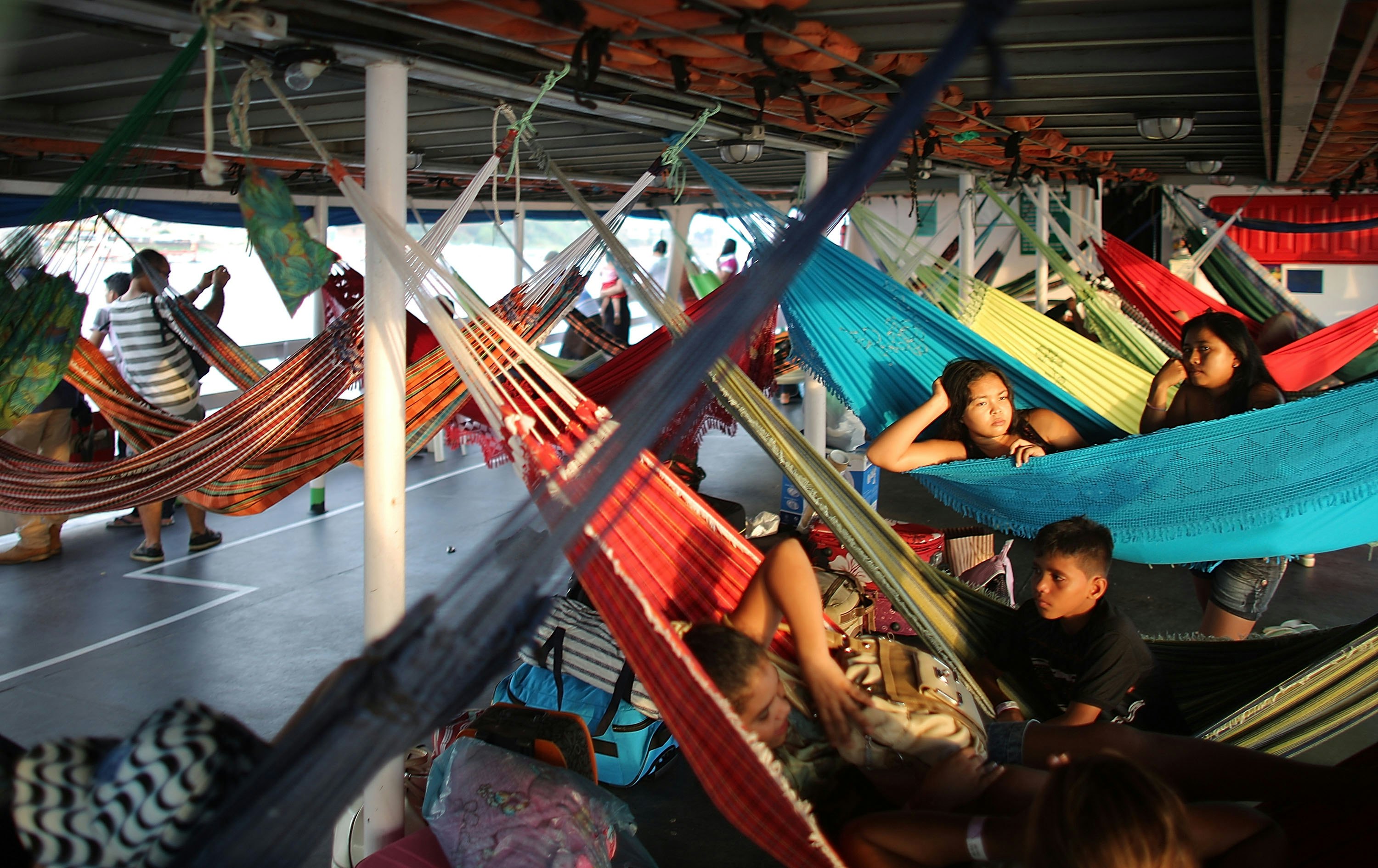
Step 3: Decide your desired level of comfort
A rustic wooden ferry, or luxurious cruiser?
The Amazon is one of the world’s last great bastions of passenger river travel, and navigating the jungle via riverboat is the stuff of intrepid adventurers’ bucket lists. Boats for both travel and leisure depart Manaus regularly, running the gamut in quality and comfort. Budget motor yachts and rustic passenger ferries make up the jungle’s “highway” system, transporting residents and tourists to river settlements up and down river from Manaus. More-luxurious river cruises for tourism purposes also ply the region’s waters.
Are you looking for a refined experience or up for roughing it? The latter means stringing up a hammock on an open deck of a wooden ferry with up to 300 fellow travelers; luxurious cruises and floating resorts with all the finer things offer a more polished experience. You know what kind of traveler you are – important to keep in mind as you plan your Amazon trip.

Step 4: Consider excursion options from Manaus and book ahead as far as possible
The Amazon is yours to discover – with some advance planning.
Wildlife and unspoiled nature have long been absent from Manaus’ direct vicinity, so the majority of the city’s visitors will be coming or going from adventures further afield in the jungle. That’s not to say there is nothing to do in the city itself – the wonderful Teatro Amazonas, a stunning belle-époque confection built during a rubber-boom bonanza, comes to mind – but Manaus is, in most cases, a (fascinating) transit point. Needless to say, the Amazon is popular – so always book excursions and jungle lodges as far in advance as possible. Here are some of the most in-demand excursions from Manaus.
Encontro das Águas
The city’s spectacular meeting of the waters – which merge but don’t seem to mix – is the easiest and most popular excursion from Manaus, its location just east of the city center making it for a perfect quick trip. The dramatically dissimilar Rio Negro and Solimões come head to head just off Manaus’s shoreline, refusing to yield for some 6km (4 miles). It makes for a wild natural phenomenon and is the city’s principal must-see, usually included on any day trip and/or passage to river lodges.
Rio Urubu
One of the closest pristine environments to the city, Rio Urubu’s intact ecosystem affords wildlife viewing opportunities aplenty within its dense flooded-forest environs, just two hours by road from Manaus. Jungle hikes, visits to local communities, overnight forest camping and a few notable jungle lodges are highlights here. Proximity to Manaus makes for a convenient option for time-limited visitors.
Juma River
Some 100km (62 miles) and three hours by boat southeast of Manaus, the Juma River unravels within a 17,000+-acre preserve that, while surrounded by ever-encroaching modernity, remains a rich and worthwhile ecosystem and preserved biodiversity hotspot. The river is so serene, folks joke it harbors a characteristic, lake-like calmness. With easy access from Manaus, it’s a popular spot, and several jungle lodges operate here. Top-end Juma Lodge comes highly recommended for its sustainable architecture and eco-forward ethos (think photovoltaic solar energy, 90% local community staff, etc).
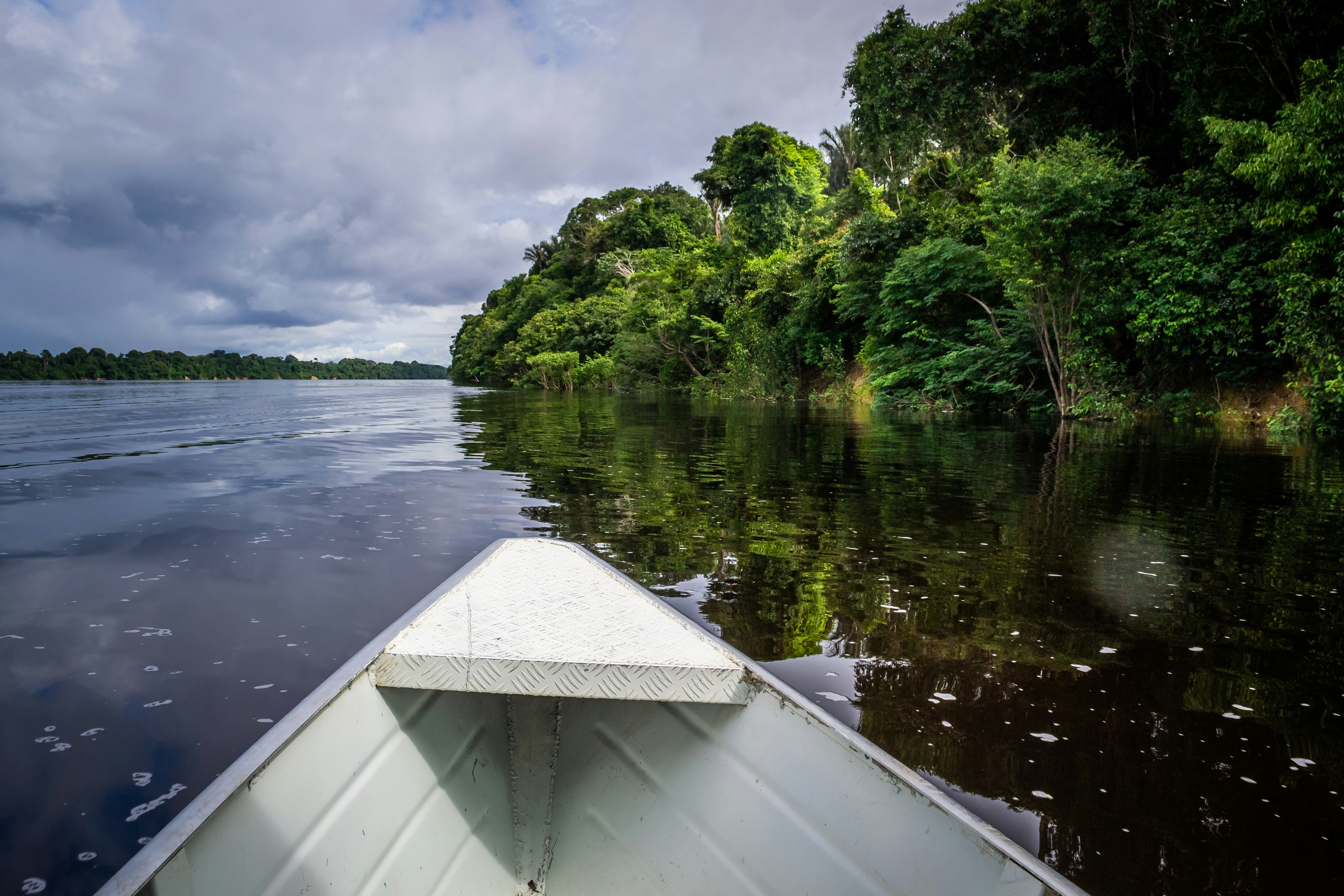
The preserves and parks of the Rio Negro basin
The largest blackwater river in the world, the Rio Negro is the gateway to deeper Amazonian exploration and home to several notable national parks. Parque Nacional de Anavilhanas, a half-day boat ride northwest of Manaus, is home to some 400 river islands (at high-water level, an eerie sunken forest effect makes for spectacular photos) and a jungly patchwork of nook-and-cranny-fed waterways that stretch some 130km (81 miles). Further west, Parque Nacional do Jaú, Brazil’s second-biggest national park, clocks in at 23,000 sq km (8880 sq miles) – one of the world’s largest patches of preserved tropical rainforest. Finally, Reserva Extrativista Baixo Rio Branco-Jauaperi, 500km (311 miles) upstream from Manaus, requires more determination and time to access – but those who make the effort are justly rewarded with some of the Amazon’s best wildlife-viewing opportunities.
Step 5: Pack appropriately
Don’t count on purchasing anything you forget.
This one might seem obvious – yet it’s crucial to keep in mind that popping into a nearby shopping mall won’t be an option. If you’re going the rustic-riverboat route, you’ll want to bring cavalcade of supplies: hammock, rope, light bedsheet, dry snacks, a good book or two, extra toilet paper, mosquito net, familiar medicines, anti-bacterial Marseille soap, thin cable and lock (to secure your bag to one of the boat’s center poles), and so on. (At jungle lodges, some of those basic necessities will generally be on hand.) Regardless of the trip you choose, you’ll also want a bevy of long, breathable, waterproof clothes, waterproof shoes or boots, a raincoat or parka, sunscreen, hat, binoculars, water bottle and filter, and plenty of serious mosquito repellent (the natural, organic stuff won’t cut it here). Malaria risk is lower in Manaus and the lower Amazon basin, so drugs for malaria prophylaxis aren’t entirely necessary. Still, speak with your doctor before you make any final decisions.
Step 6: Plan out your Manaus meals
Dig into fascinating local cuisine.
The Amazon serves up some of Brazil’s best and most interesting restaurants. Reserve a table in advance at Banzeiro, a long-standing Amazonian dining icon where Chef Felipe Schaedler flips the jungle’s bounty into surprising and unique fare, including the unforgettable crunchy tambaqui ribs and an arsenal of locally driven delights. At Biatüwi, Brazil’s first Indigenous-run restaurant, Sateré-Mawé Chef Clarinda Ramos showcases the Amazon-basin delicacies of nearby local communities. And don’t miss the city’s signature sandwich, the x-caboquinho, made with curd cheese, fried pacovã banana and tucumã shavings on French bread.

If I could do it all again…
I have experienced the Amazon from all available extremes: rustic passenger boats, a midrange cruise and several luxury jungle lodges. Honestly, each option offers a unique and extraordinary experience – with a few caveats. Staring into the forest canopy over several days from a riverboat can become tedious – you don’t see as much wildlife as you imagine (you’ll see some pink dolphins in the river if you’re lucky, but most animals are hidden deeper into the rainforest), and there isn’t a lot to do besides drink and swap traveler tales. Excursions from river lodges are better, with the added bonuses of expert guides, more-comfortable accommodations, better food and a (potential) escape from mosquitoes.







